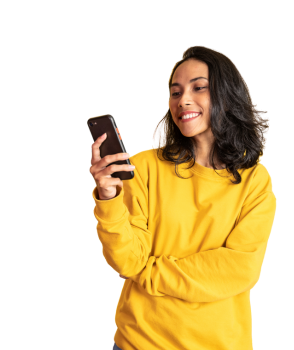Once upon a time, before algorithms and tracking pixels ruled the world, storytelling was how we connected, persuaded, and occasionally lied about catching the ‘biggest fish’. And guess what? It still works.
Storytelling can transform forgettable ads into engaging experiences that make people stop, watch, and (hopefully) take action. Whether you’re running social ads, search campaigns, or video content, weaving a compelling narrative can be the difference between a passive glance and a genuine connection.
So, let’s break it down. Why does storytelling work? And more importantly, how can you use it to level up your Paid Media campaigns?
Why Storytelling Works in Paid Media
Because Humans Are Hardwired for Stories
Humans are inherently drawn to stories. Narratives stimulate our brains, making information more relatable and memorable. When we read or hear a narrative, we experience it as though it were happening to us, thanks to the activation of mirror neurons. By integrating storytelling into campaigns, brands can create emotional connections that resonate with audiences, leading to increased engagement and recall.
Think about Nike’s legendary ads. They don’t just sell shoes - they sell perseverance, dreams, and the idea that you could be the next big thing. And that’s exactly why their campaigns stick. Their ads feature real-life stories that echo the genuine experiences and struggles of athletes, sports enthusiasts, and fitness fans.
Because Stories Build Trust (and Nobody Likes a Faceless Brand)
Storytelling humanises brands, allowing them to showcase their values and missions authentically. It shifts the focus from “Here’s what we sell” to “Here’s why it matters.” Sharing stories that align with your audience’s values builds trust and fosters loyalty. Understanding behavioural science and consumer psychology is crucial for crafting narratives that connect emotionally with your audience.
For example, you could leverage the Mere Exposure Effect to structure ad sequencing so that the first exposure introduces the narrative, and subsequent ads reinforce your key message. Familiarity increases trust, making potential customers more receptive to conversions over time. And to strengthen this connection, incorporate social proof by using phrases like “Join 100,000+ happy customers” or “Trusted by industry leaders” to reinforce credibility and trust.
Because It’s the Only Way to Stand Out in a Crowded Feed
Digital marketing channels are battlegrounds for attention, with thousands of brands fighting for a moment of screen time. In this noisy, attention-starved battleground, storytelling makes people pause. Whether it’s an emotionally charged video, a quirky TikTok saga, or a mini-narrative in a search ad, it’s the unexpected hook that captures attention.
What Makes a Story Work?
Here’s the secret: every story needs three things — a hero, a problem, and a resolution. And no, your product isn’t the hero. Your customer is.
- The Hero — a relatable lead character. The user. Someone with a problem, pain point, or desire. Your audience should see themselves in your story. Whether it’s a stressed-out professional, a new parent, or a fitness enthusiast, the best campaigns mirror real-life experiences. One way to do this is by incorporating the Endowment Effect behavioural messaging into your ads.
- The Problem — pain points, conflicts & resolution. The challenge the hero faces. Every great story has a problem and a solution. Maybe it’s a messy house solved by a miracle cleaning spray. Maybe it’s slow WiFi that finally gets the speed boost it deserves. This is your ‘relatable moment’ — show empathy and connect with audiences here.
- The Solution — how your product or service resolves the problem. This is where you swoop in with your product or service as the solution. But subtly, please. Nobody likes a hard sell. The journey from problem to resolution keeps your audience invested.
Alongside the above, you should also remember these three Cs of Paid Media storytelling.
- Core: the emotional core. Joy, nostalgia, relief, excitement—emotions drive decision-making. They actively contribute to our social connections, shape our personal narratives, and guide our behaviours, making them integral to the human experience. By tapping into these emotions, brands can create powerful connections that motivate action.
- Clarity: A focused narrative ensures that the audience understands the intended message without confusion. Clarity is key to effective communication and engagement. If your audience has to decode your ad, you’ve lost them. Keep it sharp, simple, and instantly understandable.
- CTA (Calls to Action): Every story should have a purpose—whether it’s getting someone to buy, subscribe, or engage (like, comment, etc). What’s the next step? What do you want your audience to do once you’ve got their attention? Stick this at the end of your ad and make it very obvious. To further incentivise a final action, couple your CTA with urgency and scarcity nudges, such as, “Limited time offer — don’t miss out, buy now!” or “Sign up now and be the first to experience this exclusive opportunity”. Need help crafting CTAs that convert? Check this out.
Where Storytelling Works Best in Paid Media
Different platforms mean different storytelling tactics. Here’s how to make the most of each:
Social Media Ads (Instagram, Facebook, TikTok)
- Think short, snappy, and visually engaging.
- Stories, reels, and carousel ads work great for showcasing customer experiences or quick brand journeys.
- A 10-second TikTok ad showing a product’s impact in real life will always perform better than a generic sales pitch.
- Include curiosity hooks like, “Swipe to see how it ends.”
Brands like Duolingo and Liquid Death are owning this space. Duolingo’s TikTok content blends humour, mascot-led storytelling, and subtle product placement to build affinity and virality. Their recent campaign around the mysterious ‘death’ of Duo, the green owl mascot, had fans hooked for weeks, fueling speculation, emotional investment, and record-breaking engagement across platforms. Liquid Death consistently uses edgy, irreverent narratives in its short-form ads to both entertain and reinforce brand identity.
Search Ads (Google, Bing)
- Even with limited characters, a well-crafted mini-narrative works wonders.
- Instead of “Best skincare deals online,” try “Tired of breakouts? Here’s your solution.”
- A subtle storytelling element makes search ads feel less robotic and more personal.
Glossier is a strong example here, using emotionally resonant language like ‘skin first, makeup second’ even in tight ad formats, to communicate their brand ethos and user benefits in just a few words.
Video Ads (YouTube, OTT platforms)
- Video allows for deeper storytelling—take advantage of it.
- The first five seconds are everything. Start strong, introduce the hook, and build tension.
- Long-form storytelling works great here, whether it’s a brand journey, a customer story, or a behind-the-scenes look.
- Frame narratives with an emotional peak and a strong ending (Peak-End Rule).
Apple’s recent YouTube campaigns are masterclasses in cinematic storytelling, often highlighting accessibility or creativity through real-user stories. Similarly, Airbnb’s video ads spotlight hosts and travellers in emotionally compelling narratives that reinforce community and belonging.
Display Ads (Banners, Pop-ups, Retargeting)
- Visual storytelling is the key.
- Use strong imagery and concise text to tell a quick, engaging story.
- The goal? Make people feel something at first glance.
- Leverage scarcity and social proof in a single image: “95% of customers love this product—try it today.”
Brands like Canva and Monday.com use display ads that show a clear ‘before and after’ transformation, telling a story visually in one frame. It’s a fast, frictionless way to communicate value and motivate clicks.
How to Bring Storytelling Into Your Paid Media Strategy
- Know your audience. Start by building customer personas. Research what your audience cares about and tailor your stories accordingly. Understand your audience’s pain points, aspirations, and motivations. This will help you craft stories that truly resonate. A mismatched story is worse than no story at all.
- Use data to refine your storytelling. Test, tweak, repeat. The best-performing stories are data-driven. Use insights from past campaigns or consumer reports to identify what kind of stories your audience engages with most.
- Encourage user-generated content. Your customers are your best storytellers. Encourage them to share their experiences with your product—it’s authentic, relatable, and highly shareable.
- A/B test elements of your narratives. Test different storytelling angles to see which resonates best. For instance, does a hopeful tone outperform a humorous one?
- Be consistent across platforms. Your brand’s story should be cohesive across all touchpoints—whether someone finds you through a TikTok ad, a YouTube video, or a Google search.
At the heart of every great campaign is a great story. Not just one that sells, but one that connects, resonates, and sticks. So, next time you’re crafting an ad, ask yourself: Is this just another promo, or is this a story worth remembering? Because in a world of noise, the brands that tell the best stories win.
By integrating storytelling with behavioural techniques like loss aversion, social proof, and urgency, you can create paid media campaigns that not only capture attention but also convert.
Key Takeaways:
- Storytelling drives emotional engagement and recall. Humans are wired for narratives—stories activate emotional and cognitive responses that make ads more memorable and relatable than straightforward product pitches.
- Your customer is the hero, not your product. Effective ad storytelling positions the user as the protagonist facing a problem, with your product or service acting as the solution, not the centre of the story.
- Platform-specific storytelling boosts performance. Different channels demand different storytelling tactics—TikTok favours short, hook-driven narratives, search ads benefit from mini-stories, and YouTube thrives on longer emotional arcs.
- Storytelling builds brand trust and connection. By showing values, purpose, and real user experiences, brands can humanise their message, build credibility, and foster long-term loyalty.
- Behavioural psychology enhances storytelling impact. Tactics like the Mere Exposure Effect, Peak-End Rule, loss aversion, and social proof can be layered into your narratives to increase persuasion and conversions.
Ready to incorporate storytelling into your campaigns? Let our expert team help you craft data-driven, psychology-backed narratives that resonate and drive results. Reach out to one of our team to get started!
Contact Us























